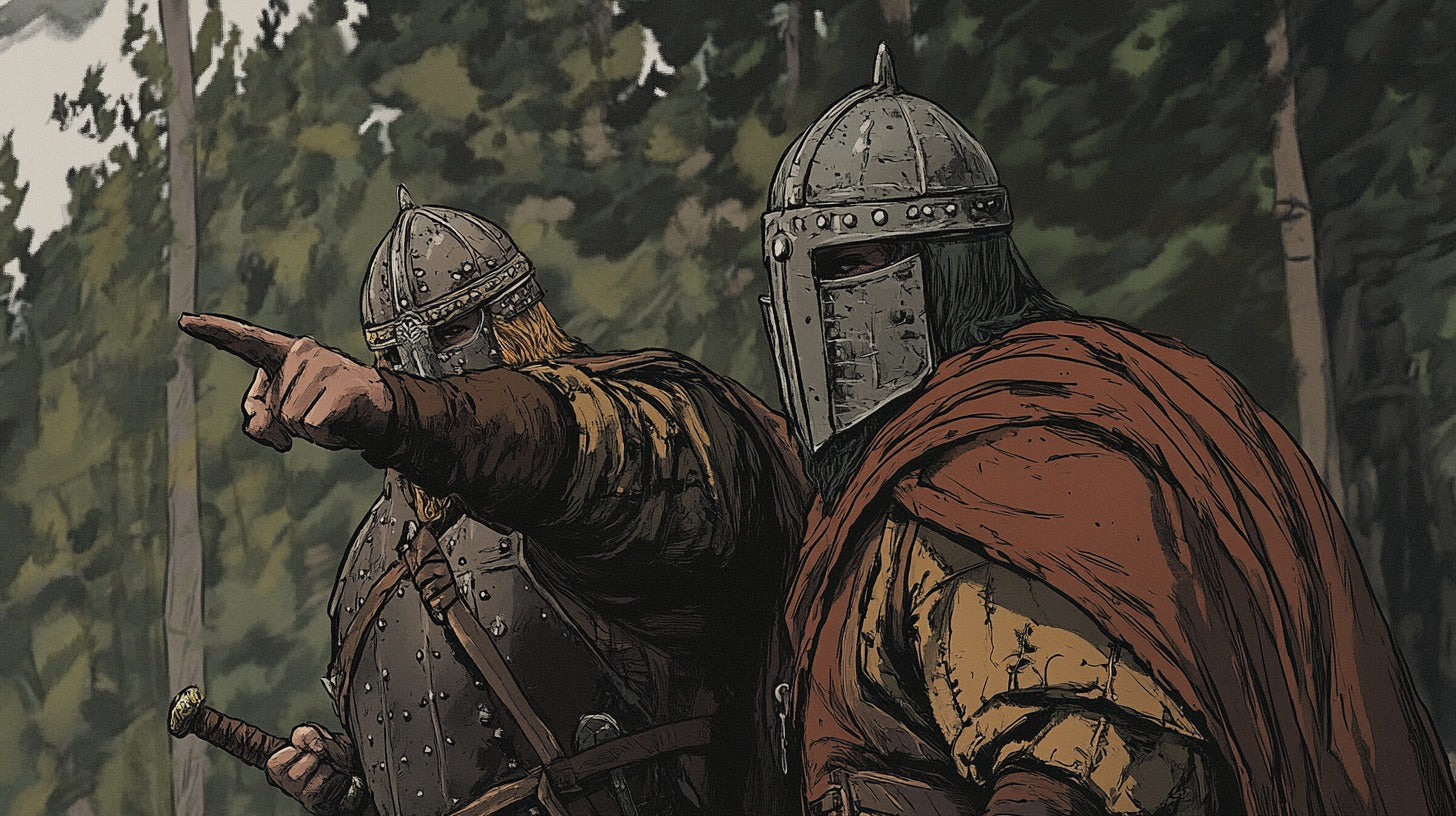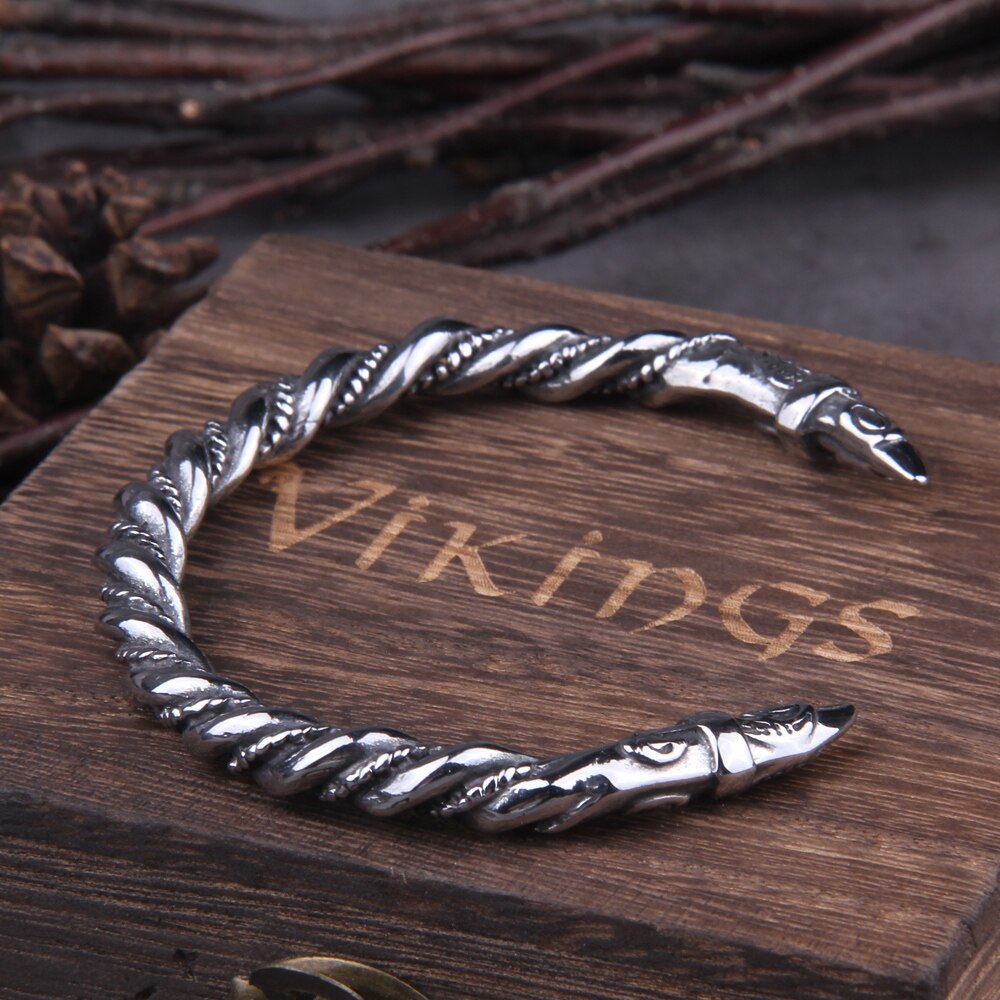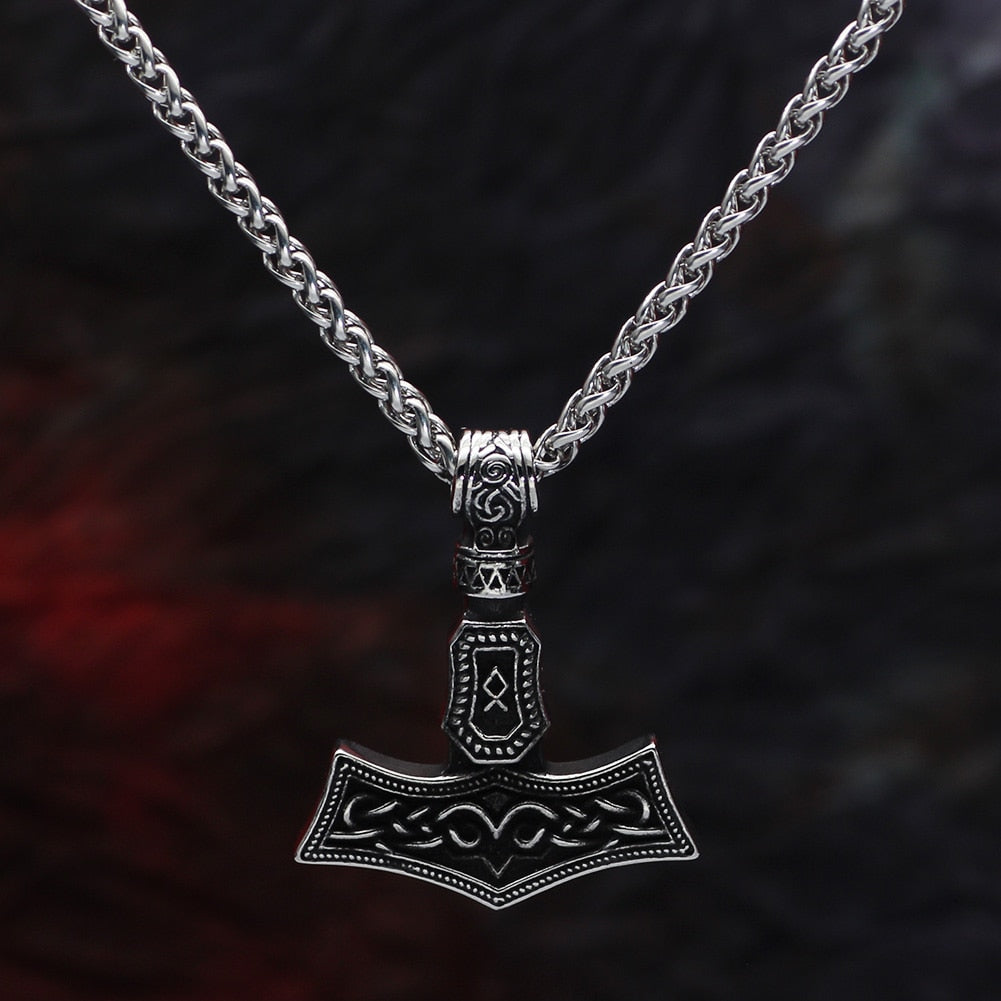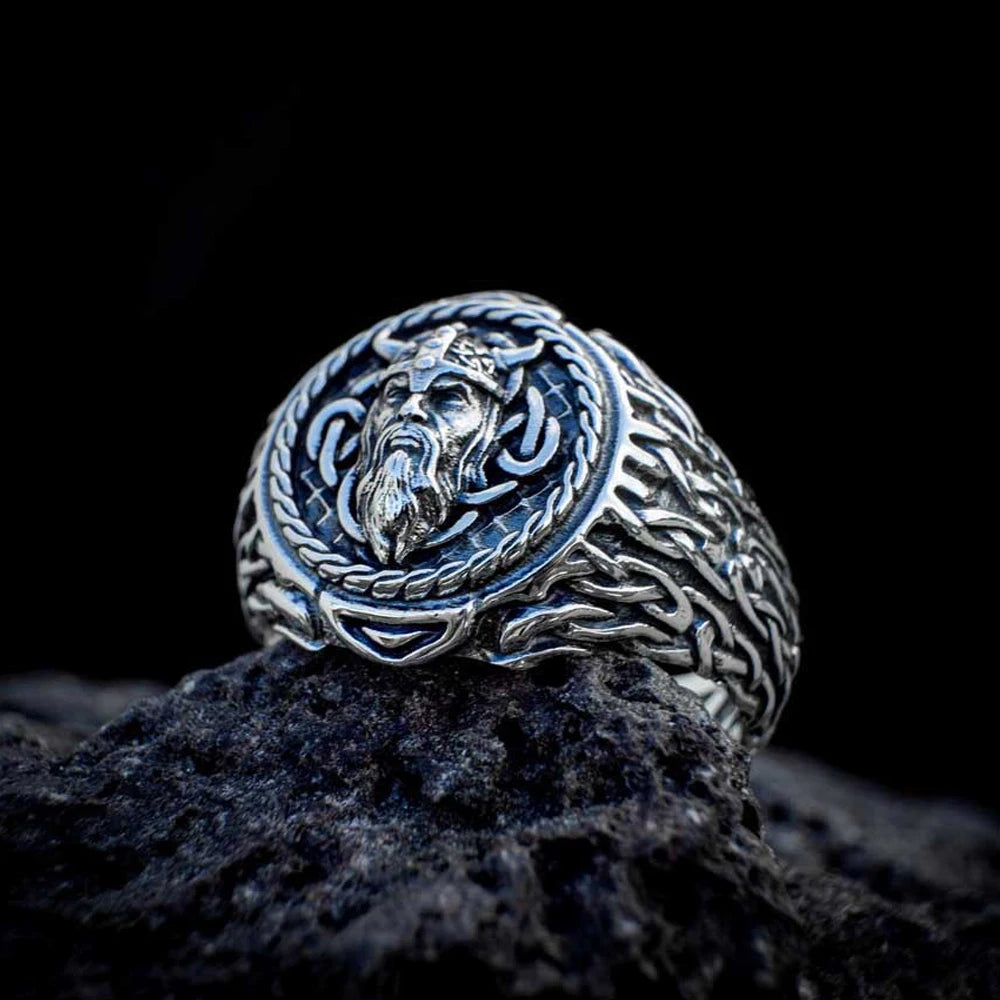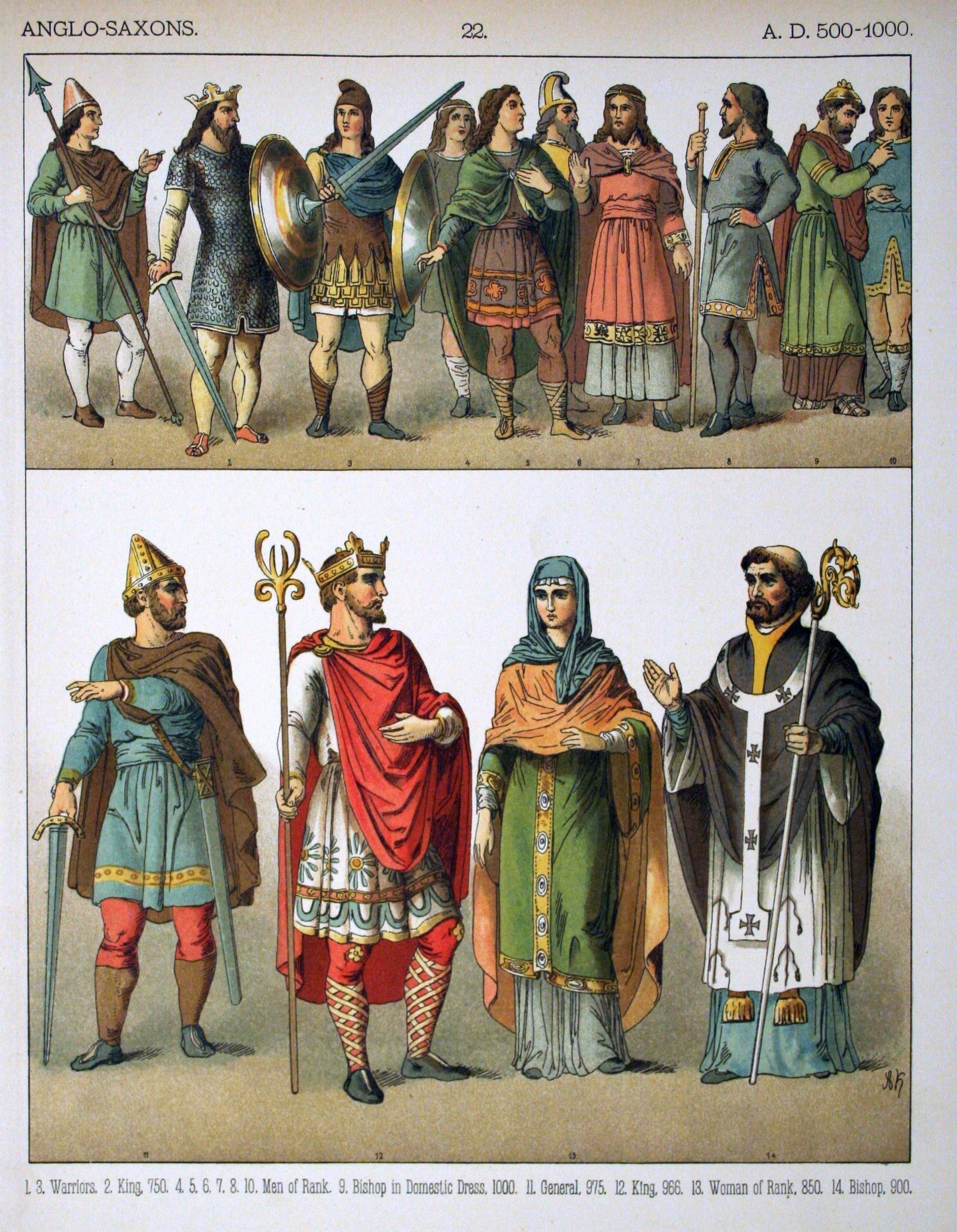
The Saxons: From Continental Origins to Anglo-Saxon Britain
The Saxons emerged as one of the most influential Germanic peoples of Late Antiquity and the Early Middle Ages, profoundly shaping the development of both continental Europe and Britain. Their story spans from their origins in northern Germania to their eventual dominance in England, where they became a cornerstone of English identity and culture.
Origins, Early History, Society and Structure

A map of the Duchy of Saxony (Photo: Alphathon)
The earliest reliable historical records place the Saxons in the region of modern-day northern Germany, particularly in Holstein and along the North Sea coast. Ptolemy, writing in the 2nd century AD, first mentioned them as the "Saxones," describing them as a seafaring people dwelling near the mouth of the Elbe River. Archaeological evidence suggests their presence in this region from at least the 3rd century AD.
Saxon society initially centered around autonomous groups led by chieftains, with strong martial traditions. Their name possibly derives from the seax, a distinctive knife-sword they carried, though this etymology remains debated among scholars. Early Saxon settlements typically consisted of small, scattered communities focused on agriculture and maritime activities.
Continental Saxons: Territory and Expansion, Frankish Wars

Handcrafted Gungnir Spearhead Byzantine & Jump Ring King Chain Amulet
The Continental Saxons occupied Old Saxony (Saxonia), encompassing much of modern-day northern Germany. Their territory expanded significantly during the 5th and 6th centuries, bringing them into conflict with the Franks and other neighboring peoples.
The most significant challenge to Continental Saxon independence came from the Frankish Empire. Charlemagne's Saxon Wars (772-804) marked a turning point, leading to forced Christianization and incorporation into the Frankish realm. The campaigns were notably brutal, culminating in events like the Massacre of Verden in 782, where reportedly 4,500 Saxons were executed.
The Anglo-Saxon Migration to Britain

The remains of a seax together with a reconstructed replica (Photo: Bullenwächter CC BY-SA 3.0)
Beginning in the mid-5th century, significant numbers of Saxons, along with Angles and Jutes, migrated to Britain. The traditional date of 449 AD comes from Bede's "Ecclesiastical History," though archaeological evidence suggests the process began earlier and continued over several generations.
Saxon settlers initially established themselves in southern and eastern Britain, founding the kingdoms of Essex (East Saxons), Sussex (South Saxons), and Wessex (West Saxons). These settlements followed the withdrawal of Roman administration from Britain, filling the power vacuum left behind.
The Anglo-Saxon Period: Kingdom Formation, Society and Governance

Tiwaz Rune Mjölnir Thor's Hammer Amulet
The Saxon kingdoms in Britain developed distinct identities while maintaining connections with their continental roots. Wessex, under the leadership of kings like Cerdic and later Alfred the Great, eventually became the dominant Anglo-Saxon kingdom.
Anglo-Saxon society developed a sophisticated system of governance, including the witenagemot (council of nobles) and a complex legal code. The social structure included eorls (nobles), ceorls (freemen), and þeows (slaves), with social mobility possible through military service or economic success.
Cultural and Religion: Pagan Traditions, Christianization

Illustration of Gungnir and Mjolnir amulets discovered in Gilton, Kent, dating between 5th to 6th century. Unlike their Norse counterparts, the southern Germanic tribes seemed to not share the myth of Mjolnir's shortened handle (according to their jewellery designs). These were also likely worn by the waist over being worn as an amulet.
Both Continental and Anglo-Saxons originally practiced Germanic paganism, worshipping deities like Wōden and Þunor. Archaeological evidence, including burial practices and ritual sites, provides insight into these early beliefs.
The conversion to Christianity occurred differently in the two Saxon regions. The Anglo-Saxons gradually converted following Augustine's mission in 597 AD, willingly, while Continental Saxons faced forced conversion under Charlemagne. Those that refused were put to the sword. This religious transformation profoundly influenced Saxon culture, governance, and international relations.
Society and Material Culture: Daily Life, Economy, Artistic Traditions
Saxon communities were primarily agricultural, supplemented by craft production and trade. Archaeological evidence reveals sophisticated metalworking, textile production, and pottery making. Maritime trade played a crucial role, particularly in coastal regions.
Saxon artistic expression manifested in metalwork, manuscript illumination, and stone sculpture. The Sutton Hoo burial site exemplifies the height of Anglo-Saxon craftsmanship, while Continental Saxon art shows distinct influences from Frankish and Christian traditions.
The Saxon legacy profoundly influenced European history. In Britain, Anglo-Saxon political and cultural institutions formed the foundation of English society. The Continental Saxons significantly shaped the development of medieval Germany, particularly through the later Duchy of Saxony. Their impact on language, law, and social structures continues to resonate in modern European societies.
Frequently Asked Questions (FAQs)
1. Who were the Saxons originally?
A Germanic people from northern Germany who later split into Continental and Anglo-Saxon groups.
2. When did the Saxons arrive in Britain?
The main migration period began around 450 AD, continuing for several generations.
3. What was Old Saxony?
The Continental Saxon homeland in northern Germany, roughly corresponding to modern Lower Saxony and Westphalia.
4. How did Saxon society differ between Britain and the continent?
While sharing common origins, they developed distinct political and cultural institutions due to different historical circumstances.
5. What role did religion play in Saxon history?
Initially pagan, both groups converted to Christianity through different processes, fundamentally transforming their societies.
References
Carver, M. (2019). The Age of Sutton Hoo: The Seventh Century in North-Western Europe. Boydell Press.
Yorke, B. (2006). The Conversion of Britain: Religion, Politics and Society in Britain c.600-800. Pearson Education.
Wilson, D. M. (1980). The Anglo-Saxons. Penguin Books.
Goldberg, E. J. (2006). Struggle for Empire: Kingship and Conflict under Louis the German, 817-876. Cornell University Press.
Blair, J. (2018). Building Anglo-Saxon England. Princeton University Press.
